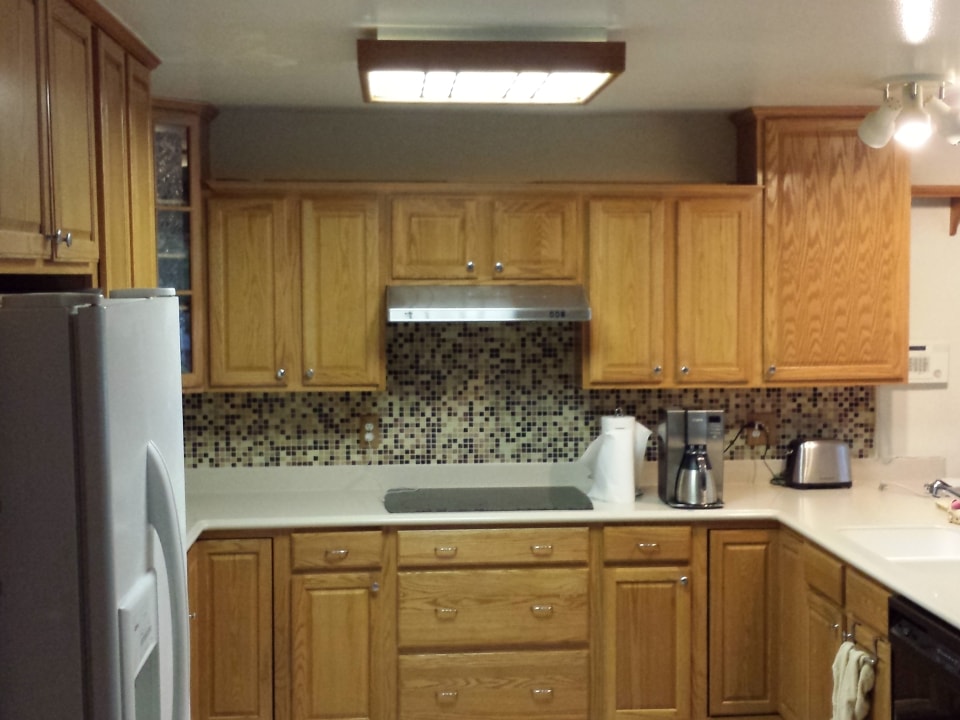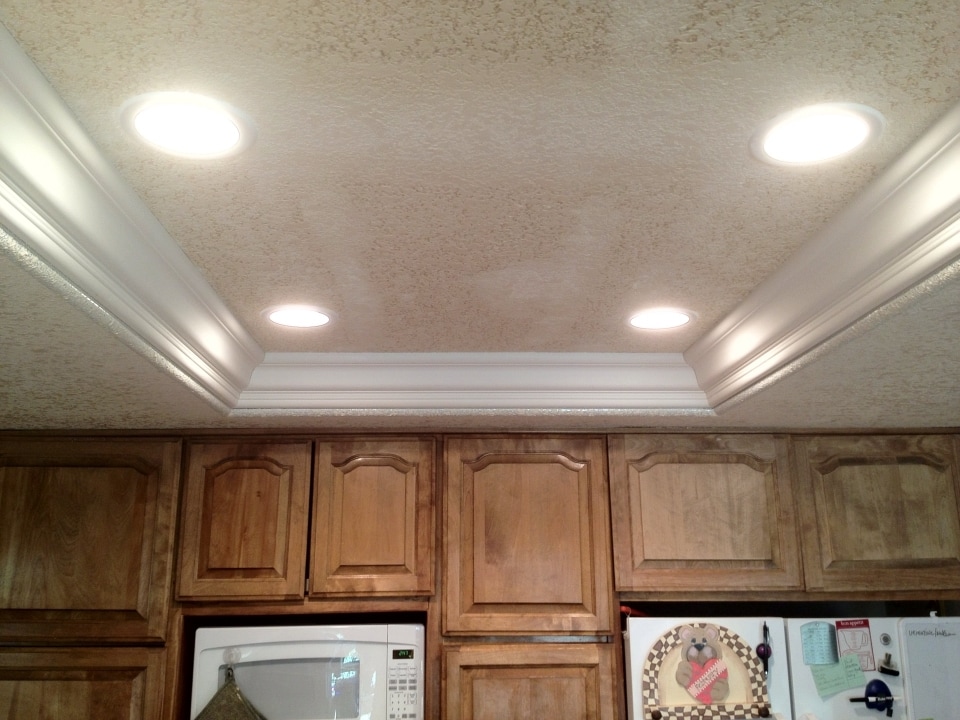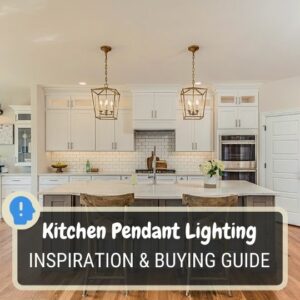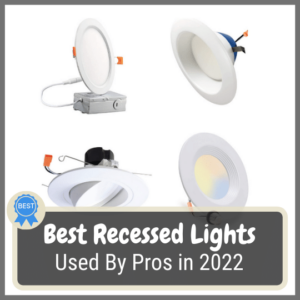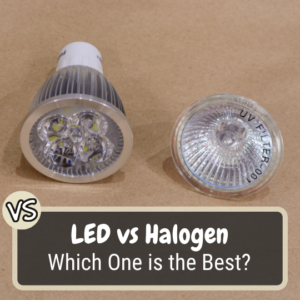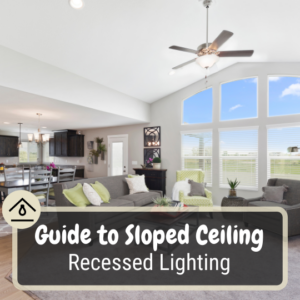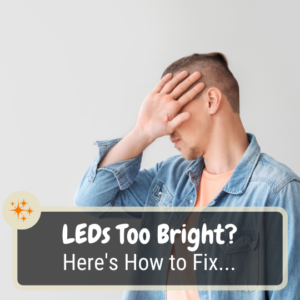 If it’s time to update your kitchen lights, you may be wondering what your options are.
If it’s time to update your kitchen lights, you may be wondering what your options are.
Recessed lighting is ideal for kitchens, and it’s what you’ll find in most new homes.
Let’s look at a few options for replacing your old lights with modern recessed lighting.
Kitchen Ceiling Types
The first thing you need to do is identify the type of ceiling you have. Then you’ll know what your options are.
Depending on when your home was built, your kitchen ceiling is likely either flat or it has a fluorescent soffit.
Flat Ceiling Type
If your kitchen ceiling is flat, it probably has one or more light fixtures mounted to it’s surface.
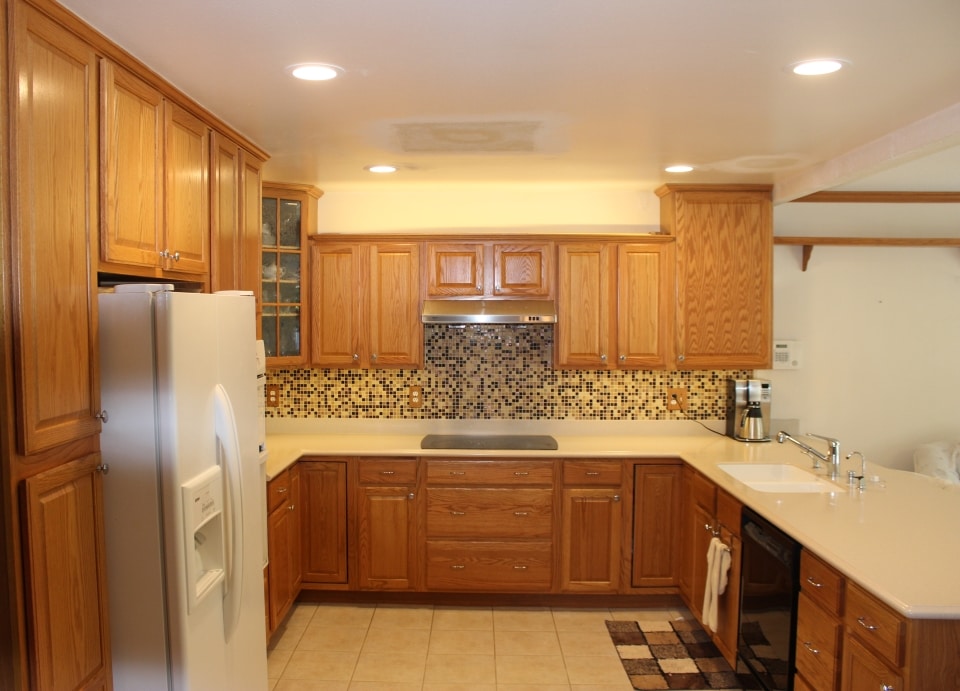 Updating it to recessed lighting is fairly simple.
Updating it to recessed lighting is fairly simple.
It involves removing the old fixtures, installing the recessed lights, and repairing any ceiling damage left over from the old light fixtures.
Fluorescent Soffit Type
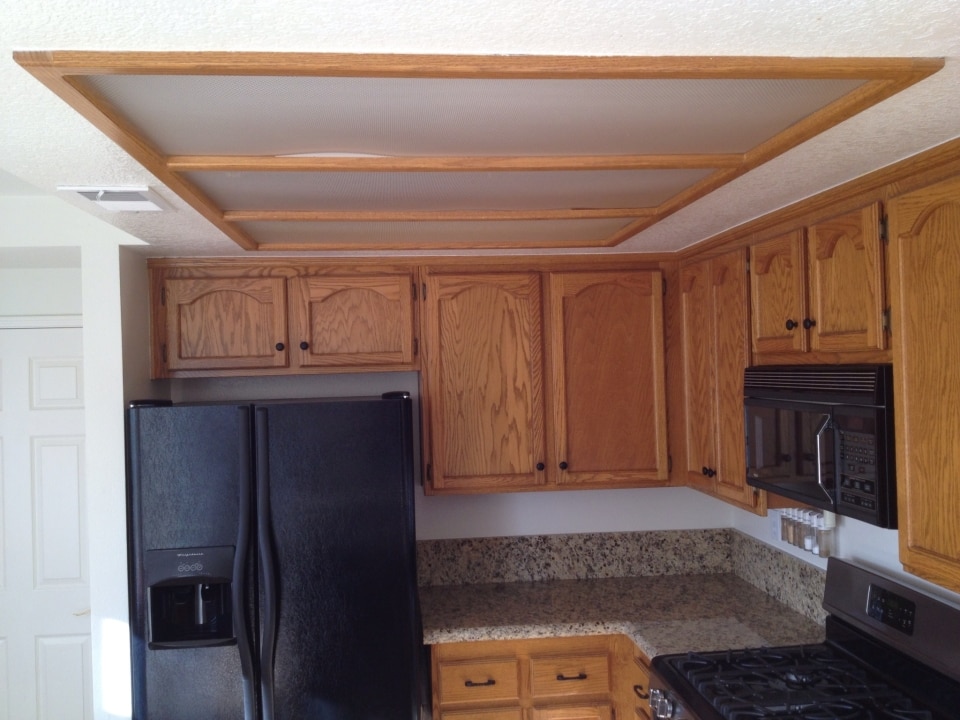 If your home was built between the 1970’s and the 1990’s, you may have a soffit ceiling with a raised portion in the center. This was built to accommodate fluorescent tube lights which are covered by plastic panels.
If your home was built between the 1970’s and the 1990’s, you may have a soffit ceiling with a raised portion in the center. This was built to accommodate fluorescent tube lights which are covered by plastic panels.
If this is your ceiling type, you have two options: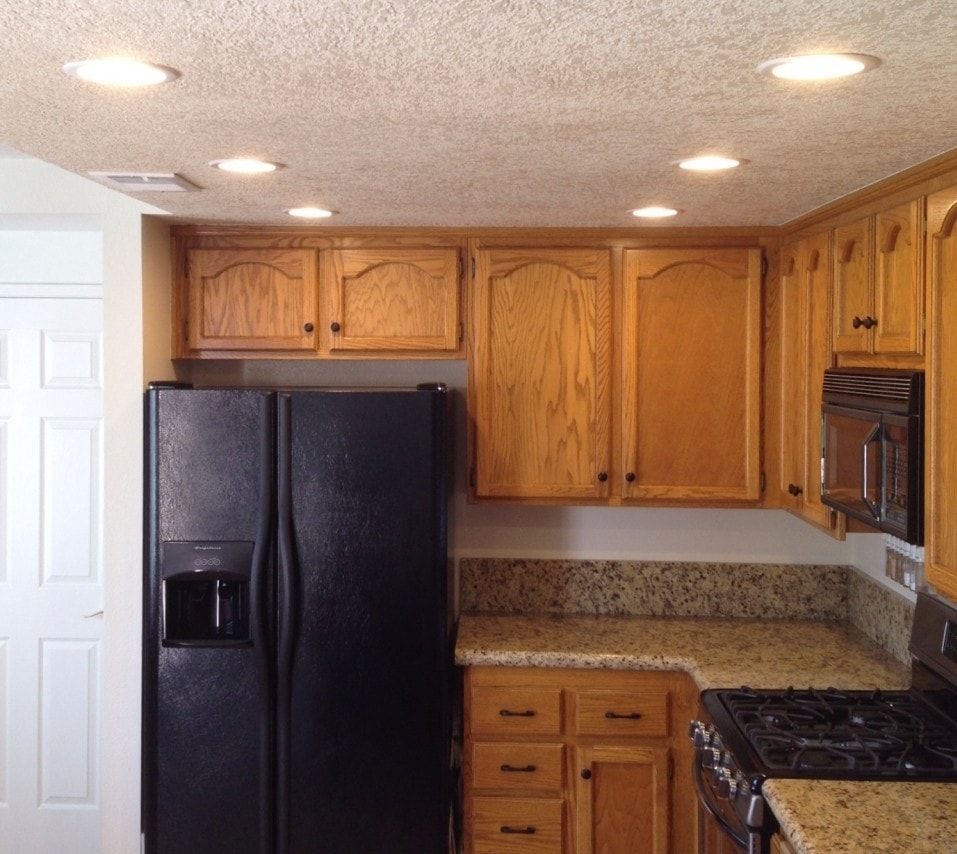
Option #1 – Make it Flat
Frame the soffit opening and cover it with drywall. This creates a modern flat ceiling for the recessed lights.
Option #2 – Leave the Soffit Open
Remove the old lighting and install recessed lights inside the raised soffit ceiling.
Depending on the size of the soffit in relation to your kitchen, you may want to add additional task lights around the soffit above the counter tops.
Adding crown moulding inside the soffit is a great way to give it a finished look.
With either option, the ceiling will most likely need to be refinished by a drywall professional and then painted.
In the examples shown here, the ceilings have been re-textured and are ready for paint.
Number of Recessed Lights
When determining the number of recessed lights your kitchen needs, think in terms of general lighting and task lighting.
General Lighting
General lighting is what provides the overall brightness in the room.
Since kitchens require a higher level of brightness than most other rooms of a home, you may need a few more lights or brighter lights than you’d use in other rooms of the same size.
Here is a post plus a calculator that you can use to get an idea of the number of lights you’ll need.
Task Lighting
The number of task lights needed (if any) will vary based on the layout of the general lights. Depending on the shape of your kitchen, the layout of your general lights may eliminate the need for any additional task lighting.
Think of task lights as “fillers” to address any surfaces that will not be adequately lit by your general lighting.
Besides recessed lighting, under cabinet lighting and pendant lights are a few other options that are excellent for task lighting.
Layout
Whenever possible, the layout of the general lights should be an even pattern according to the shape of the room. The formula for spacing kitchen lights is the same as any other room.
If task lights are needed in addition to the general lights, place them directly over the work areas. Don’t worry about aligning task lights in a pattern. I also recommend putting them on a separate switch from your general lights whenever feasible.
Type of Recessed Lights
Depending on where you live, the type of lights you install in your kitchen may be restricted by local energy codes.
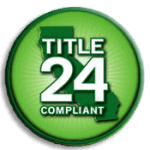 For example, here in California all of the lighting we install must meet the requirements of Title-24, a set of efficiency guidelines mandated by the CEC and updated every three years.
For example, here in California all of the lighting we install must meet the requirements of Title-24, a set of efficiency guidelines mandated by the CEC and updated every three years.
In the past, this was very frustrating because the only type of lights that met the efficiency requirements for kitchen lights were fluorescent.
Needless to say, it was hard to get excited about installing new fluorescent lighting. Except for its efficiency, there’s nothing else appealing about it.
Thankfully, LED technology has become exceptional (and affordable), and easily meets the efficiency requirements.
Size and Brightness
When it comes to brightness, it’s not the size of the recessed light that matters.
What actually matters is the performance of the fixture or lamp it uses.
So how do you know how bright a light is?
It’s simple.
Take a look at the packaging of any light bulb or LED and you’ll find the Lighting Facts Label.
This universal label was introduced in 2012, and is mandatory on all packaging of luminaries sold in the US, regardless of where they are manufactured.
Giving your kitchen lighting a makeover is a great investment. It can improve the light quality and efficiency while giving your kitchen a fresh new look.

